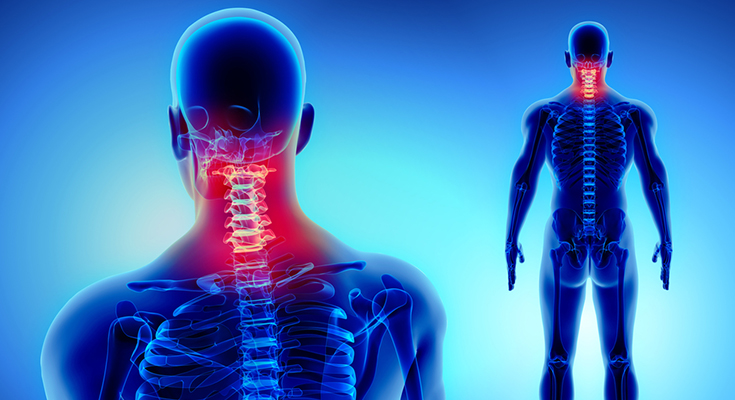Cervical pain, or commonly known as neck pain, is a health complication that affects thousands of people every year. Cervical spondylosis is a common, age related condition that is based on wear and tear of the joints in your cervical spine (Cervical spine is in your neck). It is also known as cervical osteoarthritis or neck arthritis. Cervical neck pain occurs when cartilage bones in your body grows old. The main factor is age, but other factors can cause Cervical pain as well.
People who suffer from cervical neck pain don’t even feel the symptoms while some people experience chronic, Severe pain & stiffness. However, people who have the condition can conduct their daily activities normally.
What Can Cause Cervical Pain?
The bones and protective cartilage in your neck are expected to face some wear and tear after a certain age. This wear down of bones can cause Cervical spondylosis. Here are all the factors that can cause Cervical neck pain.
- Bone Spurs
The condition where a bone grows more than it should is known as Bone Spurs. This overgrowth of these bones result from your body trying to keep your spine strong. But the same bone can press onto delicate parts of the spinal cord and nerves that can cause cervical pain.
- Dehydrated Spinal Discs
Your spinal bones have discs between them, the discs are thick pad-like cushions that absorb all the shocks of lifting, twisting and all the other physical activities you conduct. The gel-like material inside of these discs can dry over time. This causes your bones to rub with each other, which can be very painful.
- Injury
Injury to the neck is the biggest reason for Cervical neck pain. If you’ve ever had an injury to your neck, then you are more likely to develop cervical pain in your later years.
- Overuse of Neck Joints
Some jobs or physical activities require repetitive movement or heave weight lifting. Continuing the work for a long period of time can put extreme pressure on your cervical spine, which in turn leads to Cervical pain.
Symptoms of Spondylitis in Neck
As we said above, most people go their daily lives without even realizing they are suffering from Cervical pain. Many people don’t feel the Cervical pain symptoms, but to stop the health condition from going worse, we have compiled a list of most common symptoms of Spondylitis in the neck.
- Pain Around the Shoulder blade
- Occasional pain along the arm and in fingers
- Neck pain increasing while standing, sitting, sneezing, coughing & tilting your neck backward
- Muscle weakness
- Headaches that occur in the back of the head
- Tingling sensation or numbness in shoulders, arms, and fingers
There are other symptoms of Spondylitis in the neck, but they occur rarely. These symptoms include loss of balance, loss of bladder control. If you face these cervical pain symptoms, then you should contact your health-care consultant as soon as possible.
Testing and Diagnosis for the Condition
Diagnosing the situation includes conducting a lot of tests and ruling out other possibilities. Making a test also involves checking for abnormal physical movement. Your doctor will start asking you several questions regarding your symptoms. Physical examination includes testing your reflexes, checking for muscle weakness/numbness and sensory defects.
- X-Ray: An X-ray can be suggested to check for bone spurs and other bone abnormalities.
- CT Scan: A CT scan can help your physician get a better look at your neck with clear images.
- MRI Scan: MRI scan produces images using radio waves and magnetic field, this can help your doctor find pinched nerves if there are any!
- EMG: An EMG is used to check that your nerves are functioning normally. This test ensures that your nerves’ electrical energy works perfectly.
Is Surgery The Only Treatment?
If your condition is very severe, and it doesn’t respond to other forms of treatment, you may need surgery. There are a lot of medications available in the market for cervical pain treatment. The medication available is highly effective and can provide cervical pain relief. If the condition is too severe, then you may have to get operated where the doctors may remove bone spurs, part of your neck bones or herniated disc to give your spinal cord more room for movement.

